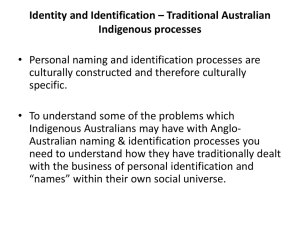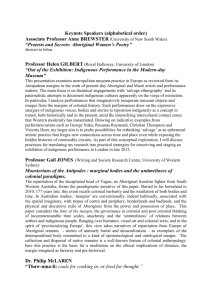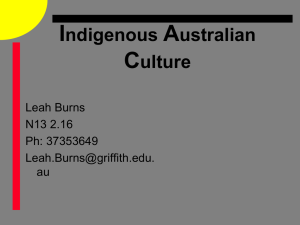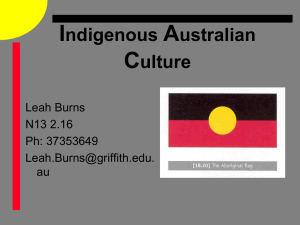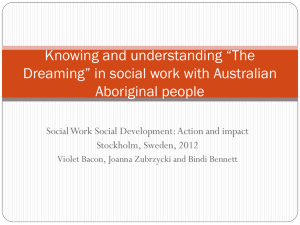Celebrating Indigenous Culture` primary school
advertisement
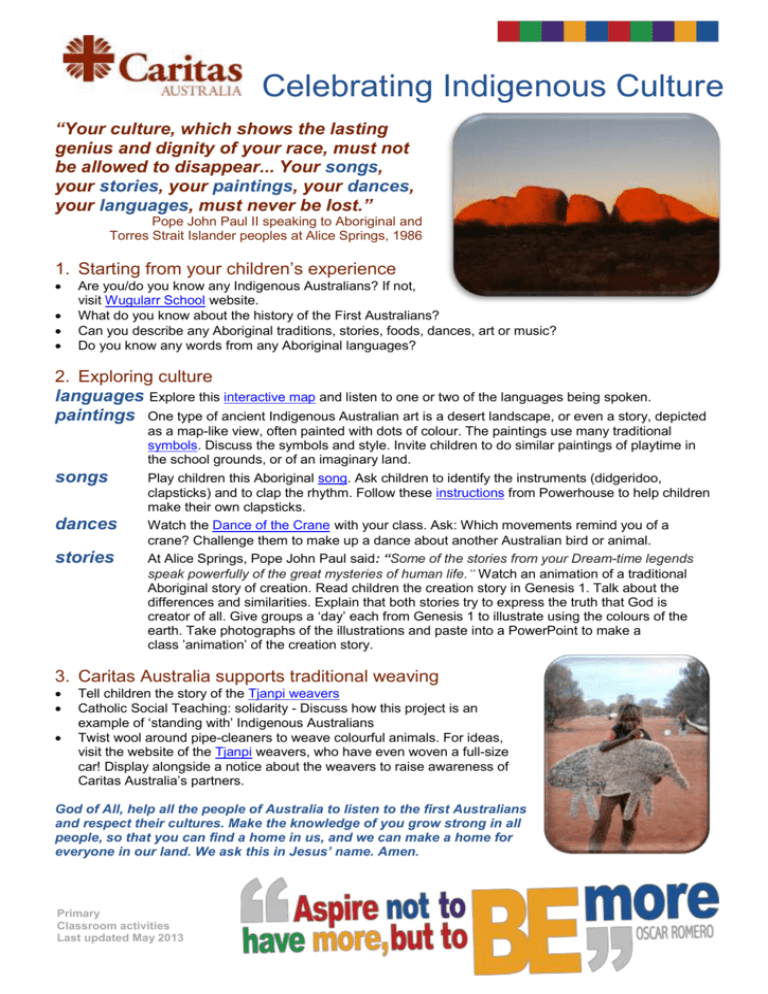
Celebrating Indigenous Culture “Your culture, which shows the lasting genius and dignity of your race, must not be allowed to disappear... Your songs, your stories, your paintings, your dances, your languages, must never be lost.” Pope John Paul II speaking to Aboriginal and Torres Strait Islander peoples at Alice Springs, 1986 1. Starting from your children’s experience Are you/do you know any Indigenous Australians? If not, visit Wugularr School website. What do you know about the history of the First Australians? Can you describe any Aboriginal traditions, stories, foods, dances, art or music? Do you know any words from any Aboriginal languages? 2. Exploring culture languages Explore this interactive map and listen to one or two of the languages being spoken. paintings One type of ancient Indigenous Australian art is a desert landscape, or even a story, depicted songs dances stories as a map-like view, often painted with dots of colour. The paintings use many traditional symbols. Discuss the symbols and style. Invite children to do similar paintings of playtime in the school grounds, or of an imaginary land. Play children this Aboriginal song. Ask children to identify the instruments (didgeridoo, clapsticks) and to clap the rhythm. Follow these instructions from Powerhouse to help children make their own clapsticks. Watch the Dance of the Crane with your class. Ask: Which movements remind you of a crane? Challenge them to make up a dance about another Australian bird or animal. At Alice Springs, Pope John Paul said: “Some of the stories from your Dream-time legends speak powerfully of the great mysteries of human life.” Watch an animation of a traditional Aboriginal story of creation. Read children the creation story in Genesis 1. Talk about the differences and similarities. Explain that both stories try to express the truth that God is creator of all. Give groups a ‘day’ each from Genesis 1 to illustrate using the colours of the earth. Take photographs of the illustrations and paste into a PowerPoint to make a class ’animation’ of the creation story. 3. Caritas Australia supports traditional weaving Tell children the story of the Tjanpi weavers Catholic Social Teaching: solidarity - Discuss how this project is an example of ‘standing with’ Indigenous Australians Twist wool around pipe-cleaners to weave colourful animals. For ideas, visit the website of the Tjanpi weavers, who have even woven a full-size car! Display alongside a notice about the weavers to raise awareness of Caritas Australia’s partners. God of All, help all the people of Australia to listen to the first Australians and respect their cultures. Make the knowledge of you grow strong in all people, so that you can find a home in us, and we can make a home for everyone in our land. We ask this in Jesus’ name. Amen. Primary Classroom activities Last updated May 2013

